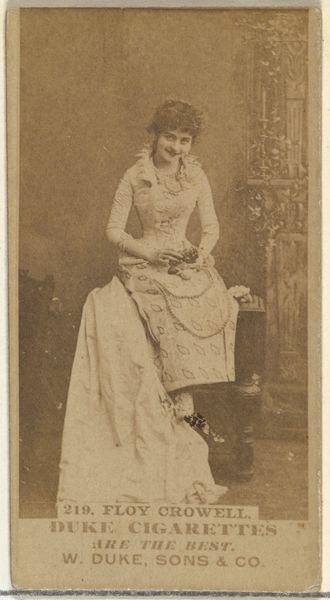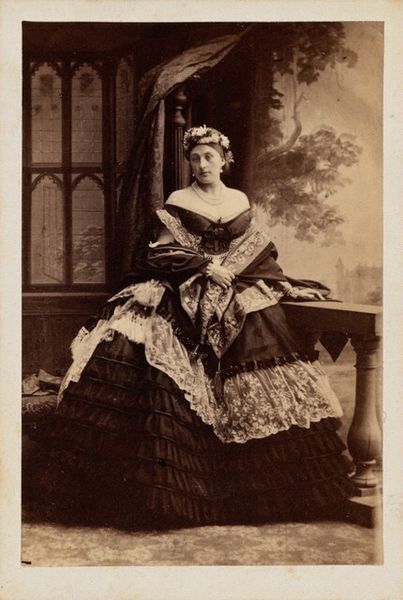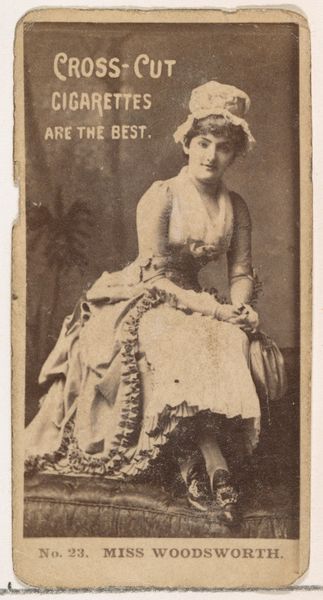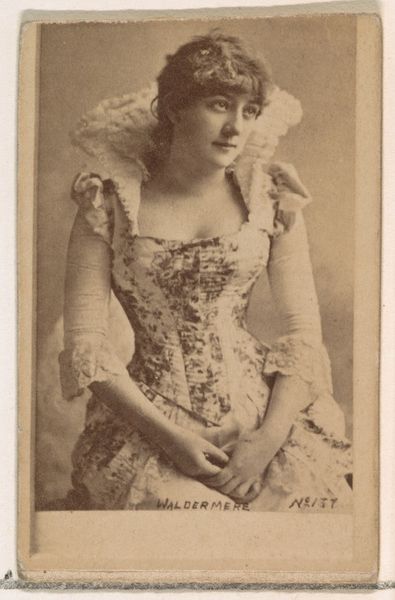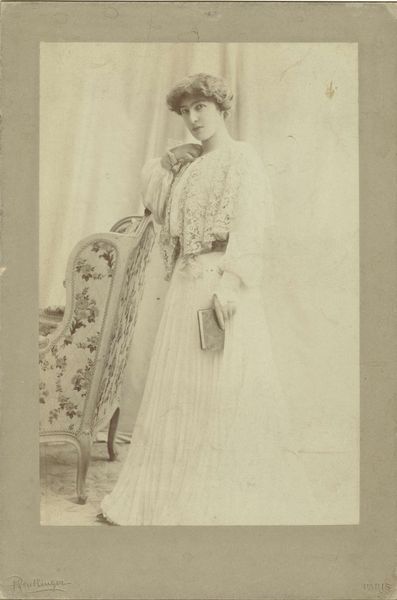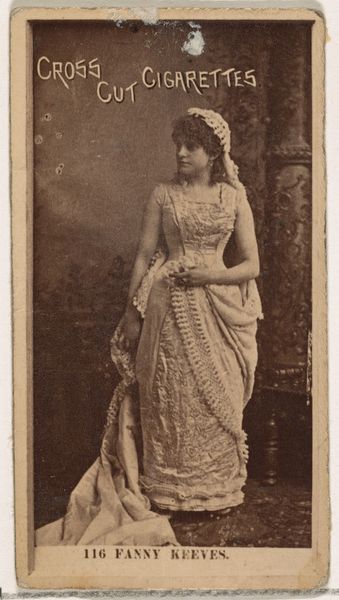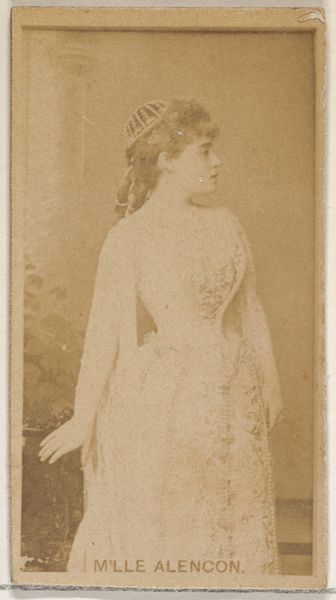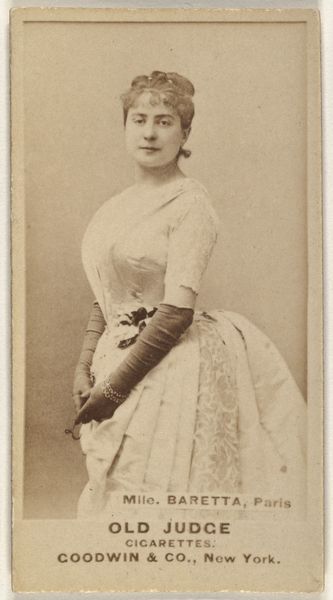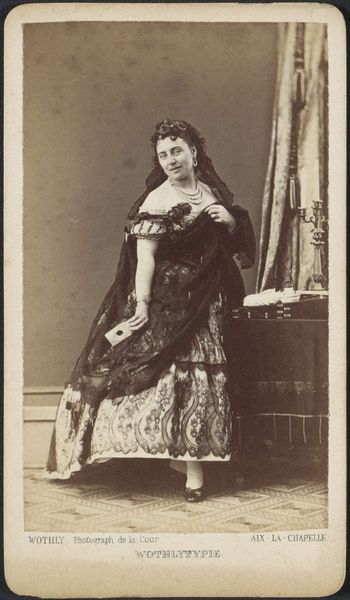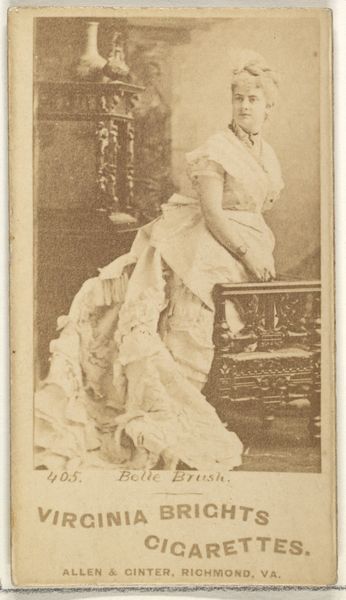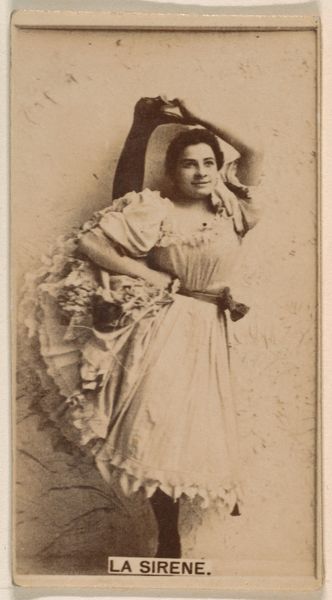
Dimensions: height 122 mm, width 84 mm
Copyright: Rijks Museum: Open Domain
Curator: Before us, we have "Portrait of a Young Woman in a Garden," a gelatin silver print made around 1853 by Eduard Isaac Asser, currently residing here at the Rijksmuseum. Editor: What immediately strikes me is the tonal range, a rather subdued palette that lends a somewhat melancholic atmosphere. The textures are remarkably captured, particularly the intricate lace detailing on her gown. Curator: The use of the gelatin silver process, still relatively new at the time, allowed for a greater level of detail and tonal nuance than earlier photographic methods. We must consider the rise of photography’s accessibility during this time; portraiture became available to a wider social class. This piece speaks to a shifting social landscape. Editor: Agreed. The composition itself is interesting. The figure isn't rigidly posed but rather leans casually against the garden wall, creating a sense of informality, yet her gaze is direct, anchoring the image. It guides your eye, almost forming a triangular structure as it meets the subtle patterns of leaves trailing along the stone wall. Curator: Indeed, and the setting provides a carefully constructed context. The garden wasn't merely a backdrop; it was a cultivated space—symbolic of both natural beauty and societal control. The photograph's success relied upon presenting its subjects within accepted norms, thereby conferring upon them a distinct social validity. Editor: Absolutely. I am fascinated by how Asser balances this with subtle details; observe how he frames her with those out-of-focus foliage that gently encroaches, which softens an otherwise stark image. It speaks volumes, creating spatial depth with these organic textures. Curator: A photograph like this would have been deeply valued, more than merely artistic; these portraits offered individuals and families the ability to craft and reinforce social narratives around themes like wealth, family connection, and moral virtue. Editor: Thinking about it, beyond the historical value, one can appreciate it still; this offers more than pure historical value as a tangible and elegant interplay of shape and form in soft grey tones. A rather exquisite balance. Curator: I agree completely. This portrait reminds us that even in seemingly straightforward depictions, the layers of historical context and artistic intention create something so intriguing. Editor: Yes, the piece leaves us contemplating the quiet interplay between individual identity and the constructs of societal norms in 19th-century photography.
Comments
No comments
Be the first to comment and join the conversation on the ultimate creative platform.

